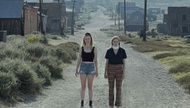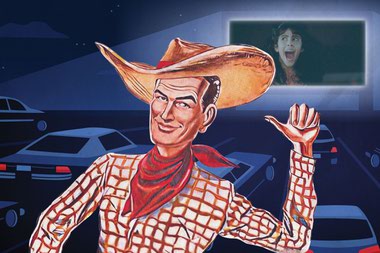Merian C. Cooper’s original 1933 King Kong is a cheesy, Lost World serial-like adventure, with entertaining, gutsy effects that mix a stop-motion puppet Kong with real-life actors and plenty of rear projection. All the iconography, good and bad, is there: Fay Wray in chains, Kong in chains, stereotypical savage natives and the indelible image of Kong fighting for his life atop the Empire State Building.
Despite the character’s fame, Kong has appeared infrequently—fewer than 10 major movies in more than 80 years. None would be what you’d call a classic. In 1976, Italian film producer Dino De Laurentiis famously produced a magnificently awful remake, starring Jessica Lange and Jeff Bridges. Shot with a kind of glossy, ’70s, disaster-movie vibe, it’s a bizarre experience. The effects are terrible, and Kong himself looks like one of those giant inflatables you see at a car dealership. Creepier is a scene on Skull Island, after Kong has spirited away Lange’s update of Wray, in which he commences an erotic interlude, cleaning a muddied Lange by holding her in his palm under a water fall, then blowing her dry, while John Barry’s sumptuously romantic score swells around. As he playfully strokes her, leeringly, he manages to pull her top down with his finger (I’m not making this up), creating an unsettling mix between a shampoo commercial, soft porn and sexual assault. (Moments later he kills a giant snake.)
Peter Jackson’s 2005 remake—hot on the heels of The Lord of the Rings—is a spectacle celebrating the sheer naked stupendousness of the American blockbuster. In trying to make the One Kong to Rule Them All, Jackson and his nation of New Zealand artisans lavished unsurpassed care and attention to detail. But this ambition, which served well in a richer narrative like Tolkien’s, was overkill: just too much gravy for the same small bite of meat.
That said, Jackson has a raucous good time staging a three dino-on-Kong showdown, with helpless Naomi Watts strung between vines as they all fall through a narrow canyon. And a grisly scene in which our band of heroes is set upon by colonies of genuinely disgusting insects and sharp-toothed worms is probably Jackson at his nastiest and best; he simply delights in the countless ways he can depict the slow, agonizing devouring of men.
The new movie, Kong: Skull Island, takes place at the close of the Vietnam War, as a scientific and military expedition heads to Skull Island and finds the usual assortment of deadly, man-eating creatures. Some things are new: This film ditches the damsel in distress for a resourceful combat photographer, played by Brie Larson. And I suppose the Vietnam flavor credibly reflects an ongoing theme of the Kong films: hubris, which forever accompanies overconfident men venturing into lands for which they are not prepared. (This also distances the new movie from the racial anxieties that have long laid in the substrata of King Kong.)
Still, let’s not get too carried away. Francis Coppola once repurposed Conrad’s Heart of Darkness, about the evils of colonialism in the heart of Africa, for his visionary, slightly mad Apocalypse Now. A generation later, Skull Island’s director, Jordan Vogt-Roberts, claims to take inspiration from Coppola’s Vietnam classic. But he’s still made a movie about a giant ape battling a giant lizard. Every generation gets the movies it deserves. Better to just keep your eyes on the spectacle.
That spectacle is partly why King Kong endures. The pulpy poetry of its mythos—here is a world where a giant gorilla can punch out dinosaurs and swat down helicopters and planes—is still potent. But underneath that, Kong appeals to us because he’s an outsider, a monster only until you get to know him. Overwhelmingly strong, he is nevertheless extremely vulnerable. He usually loses, despite his sense of … how else to say it? … honor. He just wants to be left alone, but he usually finds himself plummeting off the tops of buildings in Manhattan.
Now that Kong has joined a new franchise of related monster films dubbed the MonsterVerse (he will return in a few years to face Godzilla), one wonders what all the exposure will do to him. After all, King Kong doesn’t have friends. His journey is a reminder of one age-old truth: It’s lonely at the top.







